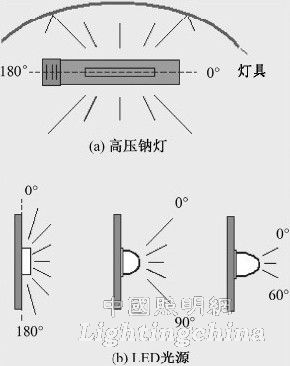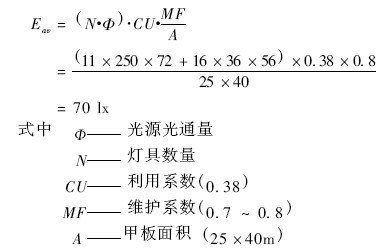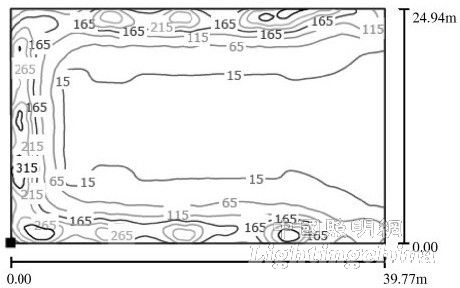1 Introduction LED (Light Emitting Diode) is a light-emitting diode whose core is a wafer (PN junction) composed of a P-type semiconductor and an N-type semiconductor. When a forward voltage is applied to the PN junction, carriers in the semiconductor recombine. The release of excess energy causes photons to emit visible light, which converts electrical energy directly into light energy. In the 1960s, based on the principle of semiconductor light, the world's first red LED was developed. In the past ten years, with the continuous advancement of semiconductor manufacturing processes and the development and application of various new materials, various color high-brightness LEDs have made breakthroughs, and their luminous efficiency has also been greatly improved, including white LEDs (1996) The birth of Japan Nichia Corporation's successful research and development is a major milestone in the history of LED development. Since the white LED light is close to daylight, it can better reflect the true color of the object, making it possible as a new illumination source. Compared with traditional illumination sources, white LEDs have high luminous efficiency (90% of electrical energy is converted into visible light), low calorific value (no heat radiation), long life (average service life of 50,000 to 100,000 hours), and environmental protection. (The lamps do not contain harmful metal elements such as mercury and sodium, and are easy to recycle). As a kind of solid-state light source, LED has no lamp head and lamp holder connection mechanism. The light-emitting diode is firmly fixed on the lamp board, which is resistant to vibration, impact and breakage. The single driving voltage is low, the current is small, the starting time is short, there is no stroboscopic phenomenon, and there is no startup delay problem, and its development in the lighting market is worth looking forward to. At present, high-power white LEDs have exceeded 100 lm /W in laboratory light efficiency and have been gradually applied to the commercial field. With the market demand and human desire for LED lighting to be promoted to the general lighting field as soon as possible, the high-power white LED technology will be developed rapidly. In the near future, LED light efficiency will reach or exceed 200 lm /W, exceeding the current light efficiency. The highest gas discharge source. As the global energy crisis is increasing and environmental pressures are increasing, LEDs, as a new generation of green lighting sources, have the advantages of energy saving, environmental protection, safety and longevity, opening up new ways of energy saving and environmental protection in the field of lighting. 2 Analysis of offshore platform lighting system The choice of illumination source should take into account the light source's efficacy, color rendering, lifetime, start-up and restart time characteristics, as well as the surrounding environment requirements for the light source. In recent years, gas discharge sources (sodium lamps, fluorescent lamps, metal halide lamps, etc.) have been widely used in cities due to their high luminous efficiency, low power consumption, long life, and no rust. Lighting of roads, highways, airports, squares, industrial and mining sites. The offshore platform is the basic facility for the development of marine oil and gas resources and is the base for offshore production operations and life. Due to the small space of the offshore platform, the space for the arrangement of various production equipment is extremely compact, and the production and operation personnel are concentrated. The selection of the illumination source should be based on the principles of safety, efficiency and economy. 1) Safety, marine platforms in the oil and gas exploration and oil and gas processing process, will produce a large number of flammable, explosive gases, especially in places where people and equipment are so concentrated, how to prevent the accidental explosion of lighting lamps has become very important Question. Because the lighting fixtures will generate electric sparks or form hot surfaces when starting or working, once exposed to explosive gases, it will cause an explosion, which directly endangers the life safety of the entire platform production and production, and the operators. Therefore, the requirements for explosion protection must be met in the selection of lighting fixtures; 2) Efficiently, choose a light source with high luminous efficiency, long life and low energy consumption. In order to ensure the safety of oil and gas production on offshore platforms, explosion-proof high-pressure sodium lamps and fluorescent lamps are widely used in platform deck lighting equipment, and fluorescent lamps are used as auxiliary light sources. The lighting method adopts general lighting and mixed lighting. For specific areas to meet the operation requirements, local lighting is adopted to improve the illumination of the working area to meet the visual needs of the construction personnel. However, as a gas discharge source, high-pressure sodium lamps and fluorescent lamps also have some shortcomings: 1) The light energy utilization efficiency is low, the light emitted by the light source must be reflected or re-reflected by the lamp once, and the effective utilization rate of light energy is only 40% to 60%, and the rest of the energy is converted into heat energy and consumed in vain. Higher 2) Due to the harsh environment of the offshore platform, the strong winds at sea plus the vibrations generated by various equipment on the platform during operation. The filament has low strength in a hot working environment, and the vibration will greatly shorten the service life of the bulb, causing the filament to break, the bulb to be loose, and severely detached from the lamp holder; 3) The high-pressure sodium light line contains a large amount of infrared and ultraviolet radiation, the color rendering index is low (Ra = 20 ~ 30), and the color temperature is generally between 1900K and 2000K; 4) The lamps contain a large amount of harmful metal elements such as mercury and sodium, which cannot be completely recovered after damage and cause pollution to the environment. 2. 1 Light source light efficiency analysis The gas discharge light source is omnidirectional radiation, which causes the light energy to be irradiated to an area that does not need to be irradiated, thereby causing unnecessary waste or pollution of the light energy. Therefore, in order to allow the light emitted by the light source to be utilized as much as possible without waste or light pollution, and to ensure efficient operation of the light source, it is necessary to use a luminaire to limit the radiation area of ​​the light source, and to increase the illumination of the illuminated area as much as possible. After the light energy produces a primary reflection or a secondary reflection in the luminaire, its energy is greatly attenuated, and part of the light energy is converted into heat energy and wasted. For LEDs, the light energy radiation is unidirectional. When the LED is packaged, if the lens with different refraction angles is installed at the light exit port, the emitted light beams have different angles, and the light can be directly irradiated to the designated area without reflection. Since the LED lamp is composed of a very large number of LEDs, the light energy can be utilized to the utmost by designing the projection direction of each LED. LED light has good monochromaticity and narrow spectrum. It can directly emit visible light without filtering, and the light source utilization rate is up to 90%. Figure 1 Offshore platform lighting Figure 2 Comparison of illumination angles 2. 2 Average illumination analysis Take the main deck lighting system of a platform in Bohai as an example (Fig. 3). The lighting fixtures use high-pressure sodium lamps (250W, 11 pieces) and energy-saving fluorescent lamps (36W × 2, 16 pieces) produced by GE, and fluorescent lamps are used as auxiliary illumination sources. To improve the lighting color of the platform, assuming that the light from the source is evenly illuminated onto the deck, the average illumination of the deck Eav: Figure 3 Lighting layout of the main deck of a platform Experimental studies have shown that human retinal visual cells feel different for daytime vision (bright vision, ambient brightness > 10 cd / m2) and night vision (dark vision, ambient brightness < 0.01 cd / m2). For the same spectral distribution, there is a significant difference in brightness between bright and dark vision conditions. The brightness of the dark light of the LED light is 2.35 times that of the bright vision, while the dark vision of the sodium light is 0.94 times that of the bright vision. Therefore, under the same illumination conditions (instrument measurement), the Led Street Lamp is 2.5 times brighter than the high-pressure sodium lamp, that is, to achieve the same brightness, the illumination of the LED street lamp only needs 40% of the high-pressure sodium lamp. Under the condition of obtaining the same lighting effect, the white LED lamp is used instead of the high pressure sodium lamp, and the LED power used is P: Table 1 Comparison of light efficiency Considering the influence of other factors on white LEDs, 90W white LED lamps are used instead of high-pressure sodium lamps, and the average illumination Eva: Figure 4 and Figure 5 show the illuminance distribution of high-pressure sodium lamps and white LEDs on the main deck of a platform in Bohai, respectively. Figures 6 and 7 show the lighting effects. Figure 4 illuminance distribution of high pressure sodium lamp Figure 5 LED lamp illumination distribution Figure 6 Platform lighting simulation diagram (high pressure sodium lamp, color temperature 2000K) 








